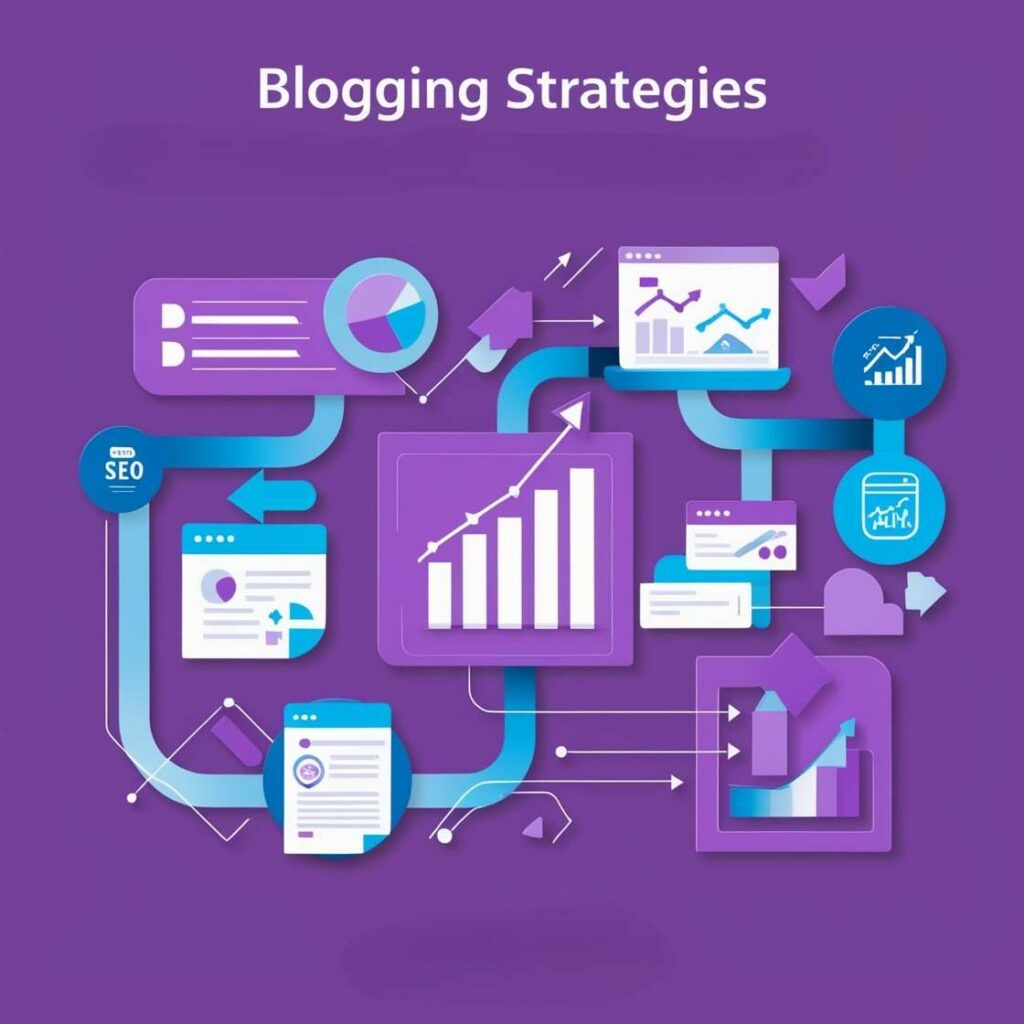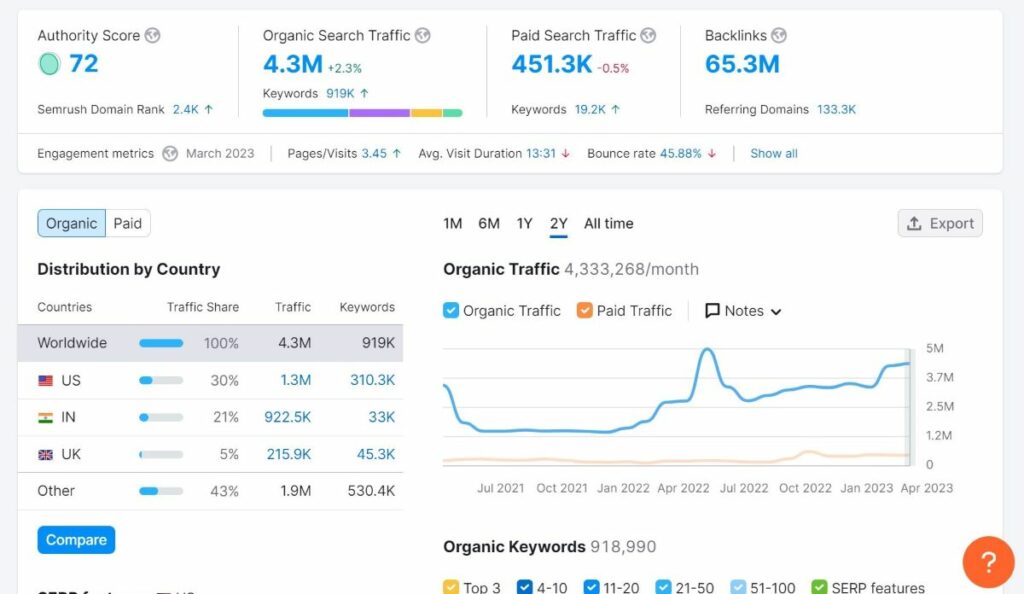10 Effective Blogging Strategies
Effective blogging strategies have become a cornerstone of successful digital marketing. Research indicates that marketers who incorporate blogging into their inbound approach are 13 times more likely to achieve a positive return on investment compared to those who don’t. This statistic underscores the transformative power of effective blogging strategies in today’s online landscape.
Over time, blogs have evolved into indispensable tools for businesses seeking to enhance their digital presence. By implementing smart blogging strategies, companies can significantly boost brand awareness, drive targeted traffic to their websites, and increase revenue through the creation of valuable, high-quality content.
Moreover, well-crafted blog posts serve as a platform to showcase industry expertise, thereby elevating conversions and establishing authority in the field.
However, simply maintaining a blog is not enough in today’s competitive digital arena. To truly harness the potential of blogging, businesses need to develop and implement comprehensive content strategies optimized for search engines.
This approach ensures the creation of engaging, conversion-driven content that resonates with both readers and search algorithms.
As we move further into 2025, you might be wondering how to consistently produce worthwhile, high-quality content that drives success for your blog.
This article aims to guide you through the process of crafting a winning blog strategy. We’ll explore proven blogging techniques that can help your small business build its reputation as an industry thought leader and expert, leveraging the power of strategic blogging to propel your online presence to new heights.

1. Identifying a Unique Market

The first and foremost step in creating a successful blog is identifying a unique market. This involves pinpointing a specific niche in which you can offer unique insights, information, or products. The fitness blogging niche, for instance, is incredibly vast.
Hence, narrowing down to a specific segment, such as outdoor fitness or home workout, can carve out a unique space for your blog. Stay tuned to the latest trends and consumer demands to identify an emerging market that hasn’t been overly saturated yet.
Key Takeaways:
2. Understanding Your Audience

Once you have identified your unique market, the next step is to understand your audience. This entails diving into demographic data, behavioral patterns, and preferences of your target readers.
For a beauty and skincare blog, knowing what age groups, gender, or even specific concerns (like aging, acne, etc.) resonate most with your content can drive more traffic and engagement.
Utilizing surveys, social media insights, and analytics can give you a clearer picture of your audience’s needs and wants.
Key Takeaways:
3. Market Gap Analysis

In a competitive niche, finding gaps in the current market can be a game-changer. Conduct a thorough market gap analysis to determine what is missing in your field.
Are there topics or products that are underrepresented? Is there a unique angle you can explore? For example, if most beauty blogs focus on makeup but not on wellness and skincare treatments, you could build a following by filling that gap. Spotting these opportunities can set you apart from your competitors.
Key Takeaways:
4. Creating a Unique Value Proposition

Your Unique Value Proposition (UVP) is what makes your blog stand out. It revolves around the unique benefits that your content offers to your readers. Emphasize what distinguishes your blog, such as exclusive beauty tips, expert interviews, or in-depth skincare tutorials.
Clearly articulate this value on your blog’s homepage and throughout your content to attract and retain a dedicated audience.
Key Takeaways:
5. Competitor Analysis

Keeping an eye on your competitors is crucial for continual growth and improvement. Conduct a comprehensive competitor analysis to understand what other successful blogs in your niche are doing right – and where they might be falling short.
This can inform your content strategies, helping you to avoid their pitfalls and capitalize on their successes. Analyzing competitors’ SEO, social media engagement, and content variety can offer valuable insights.
Also, you can use content marketing tools to do so.
Key Takeaways:
6. Tailoring Marketing Strategies

Markets are inherently diverse and multifaceted, emphasizing the crucial requirement for customized marketing strategies that cater to the unique characteristics of each specific target audience.
It is essential to understand that a blanket approach to marketing can often lead to suboptimal outcomes, as it fails to address the distinct preferences and behaviors of different market segments.
Therefore, businesses must tailor their marketing efforts meticulously to ensure they resonate deeply with their intended audience, creating more meaningful engagements and ultimately driving better results.
For instance, if we consider the niche of a beauty and skincare blog, the importance of a well-thought-out and targeted marketing strategy becomes even more evident. Given the visual nature of beauty and skincare content, leveraging a platform like Instagram can be a game-changer.
A visually appealing Instagram feed that consistently showcases stunning before-and-after images, engaging makeup tutorials, and honest product recommendations can captivate the audience’s attention in a way few other marketing methods can.
These visual elements not only highlight the tangible benefits of the products and techniques featured but also help to foster a sense of trust and authenticity with the audience.
Furthermore, augmenting this visual strategy with email marketing campaigns can significantly enhance audience engagement.
By offering exclusive content, insider tips, or special product discounts to email subscribers, a beauty blog can cultivate a more intimate relationship with its followers. This approach not only keeps the audience informed and excited about the latest beauty trends and products but also encourages a sense of community and loyalty among the followers.
Ultimately, by combining the compelling allure of a visually curated Instagram feed with the personalized touch of email campaigns, a beauty and skincare blog can effectively build a strong, engaged, and loyal following. This highlights the critical importance of employing a customized marketing approach that aligns with the unique demands and preferences of the blog’s target audience.
Key Takeaways:
7. Building Brand Loyalty

Brand loyalty is built over time, through consistency and quality. Provide your audience with reliable, informative, and engaging content regularly. Engage with your readers through comments, social media, and email to foster a community around your blog.
Offering exclusive content, early access to new products, or special discounts for regular readers can further build brand loyalty. Remember, a loyal audience not only returns but also spreads the word about your blog.
Key takeaways:
8. Utilizing SEO Techniques

Search Engine Optimization (SEO) is the backbone of any successful blog. Utilize effective SEO techniques to ensure your blog ranks high on search engine results pages. Conduct keyword research to identify what your target audience is searching for.
Incorporate these keywords naturally into your headlines, content, and meta descriptions. Moreover, backlinks, mobile-friendliness, and page speed are critical for improving your blog’s SEO performance.
Key Takeaways:
9. Leveraging Social Media

In today’s digital age, leveraging social media is indispensable for a blog’s success. Social platforms like Instagram, Facebook, and Pinterest are incredibly effective for a beauty and skincare blog, owing to their visual nature.
Regularly post engaging content, collaborate with influencers, and utilize hashtags to widen your reach. Social media ads can also be a potent tool to attract new followers and keep your audience engaged.
10. Measuring Success Metrics

Finally, consistently measuring your blog’s performance through various success metrics can guide your strategies moving forward. Key metrics include page views, unique visitors, bounce rate, and average time on page.
Tools like Google Analytics offer in-depth insights into these metrics. Additionally, track engagement metrics on social media as they can often mirror the success of your content and marketing strategies. Regularly review and adjust your approaches based on these metrics to sustain growth.
Final Words
In summary, implementing these essential blogging strategies can set the foundation for a successful and long-lasting blog. By identifying a unique market, understanding your audience, and continually analyzing and adjusting your content and strategies, you can build a strong digital presence that stands out in your niche.
FAQs
You may ask….







